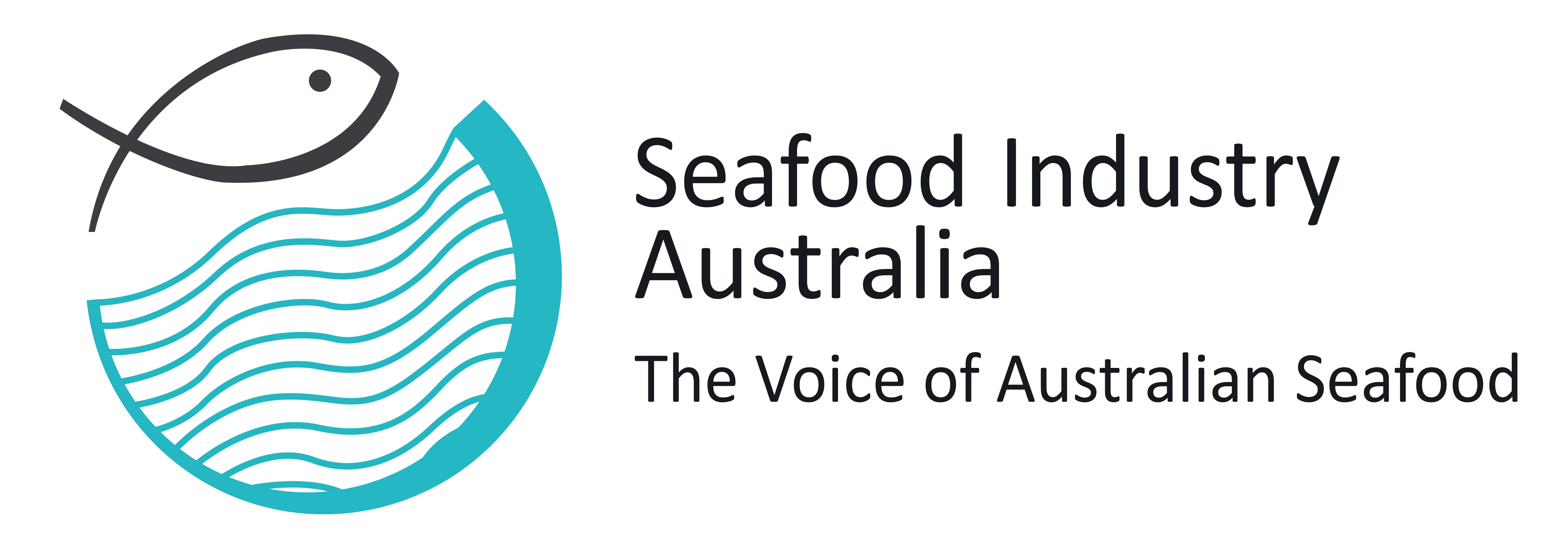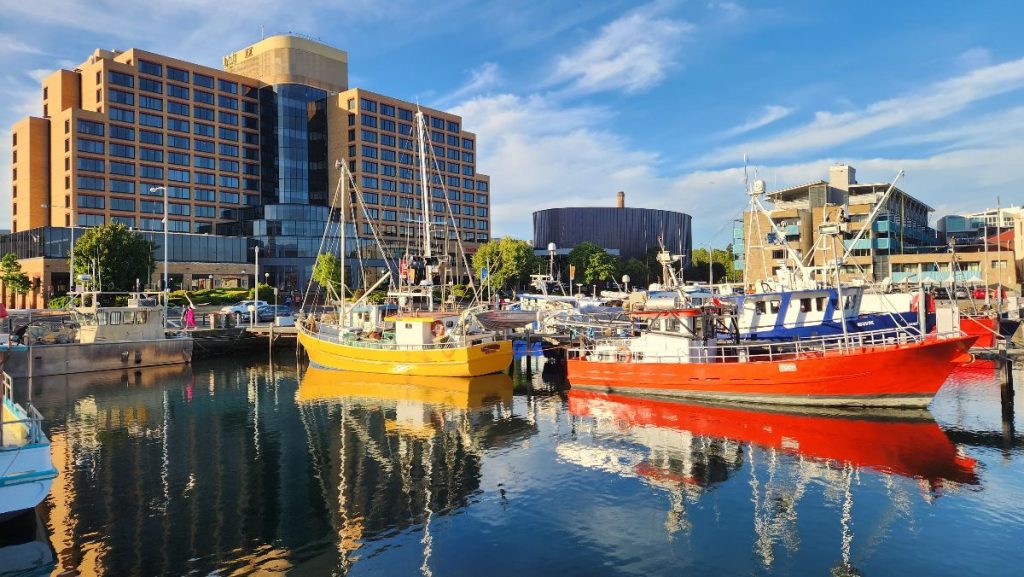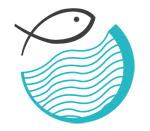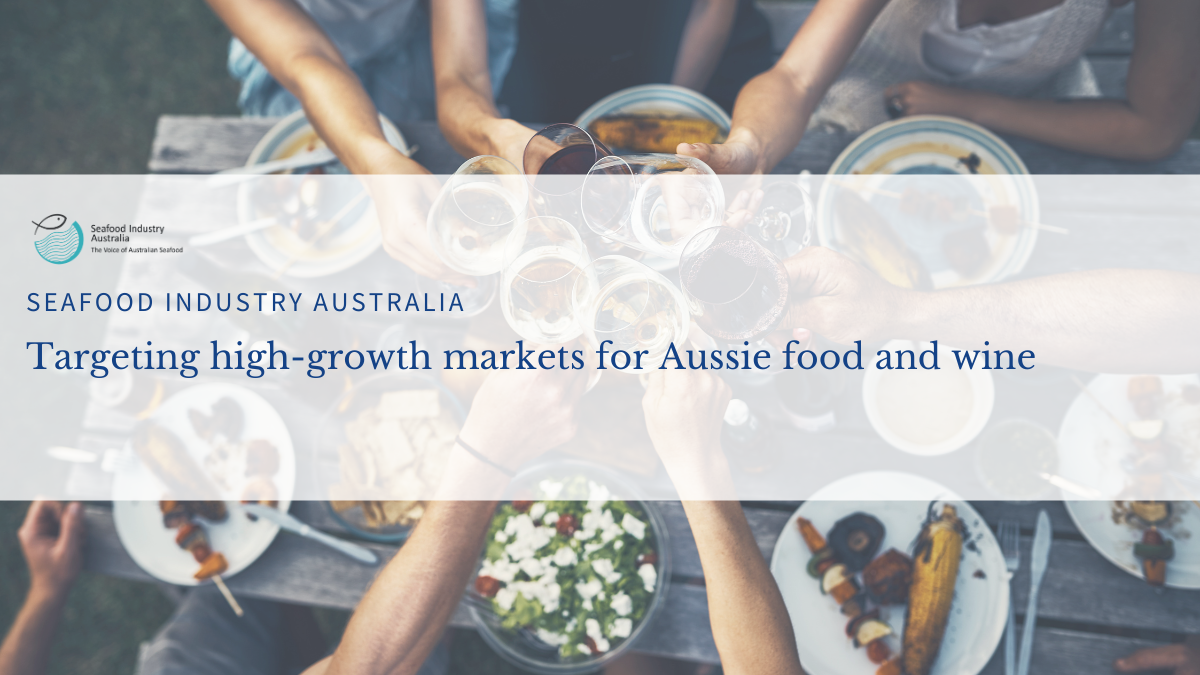
Targeting high-growth markets for Aussie food and wine
Promoting premium Australian produce in overseas markets is the main driver behind new funding from the Albanese Government.
Australian Food & Wine Collaborators has been awarded a $600,000 Agricultural Trade and Market Access Cooperation (ATMAC) grant to promote Australian food and wine overseas.
The group is a collaboration between rural research and development corporations and five agricultural peak bodies including Dairy Australia, Meat & Livestock Australia, Wine Australia, Seafood Industry Australia, and Hort Innovation.
Minister for Agriculture, Fisheries and Forestry Murray Watt said the collaboration would leverage the combined groups market intelligence to better promote and position premium Australian produce in overseas markets.
“The Albanese Government is supporting Australian producers to expand market access and new trade opportunities for Australian fresh produce,” Minister Watt said.
“Australia is internationally renowned for its safe, sustainable, and premium food and wine—two thirds of which goes to markets abroad.
“This funding will help develop a common approach to positioning in our food and wine sectors to build on already strong demand.”
The group will use the ATMAC grant to extend their ‘Team Australia’ initiative—a shared marketing strategy—to incorporate more key markets and further embed a collaborative industry approach.
This approach will see greater sharing of knowledge and resources, utilising common communication channels and streamlining engagement with industry stakeholders.
Australian Food and Wine Collaboration Group spokesperson Charlie McElhone said while each collaborating organisation has its own marketing and promotion strategies, this grant gives us the opportunity to strengthen Australia’s overall strategic position.
“We want to position Australia as a key supplier, improve market access and demand for Australian food and wine exports,” he said.
“We know that strong and clear positioning in these markets can also support a more favourable regulatory environment, which is critical when market access and global trade is becoming increasingly complex.
“A ‘Team Australia’ approach will help us leverage our collective strengths to advantage our exporters and build deeper relationships across all sectors in market.
“The project will communicate the positive attributes of Australian produce, leveraging the “Nation Brand”, as it delivers in-market activities in high growth markets for Australia.
“Taiwan will be targeted in a 6-month pilot and a similar approach will be adopted in other high-growth Asian markets.”
More information about the ATMAC program is available here: Agricultural Trade and Market Access Cooperation (ATMAC) Program
More information about the Collaborative food and wine market development project can be found here: Hort Innovation | Collaborative food and wine market development project (HA20005)
ENDS
Media contact: Brock Taylor – 0499 779 387
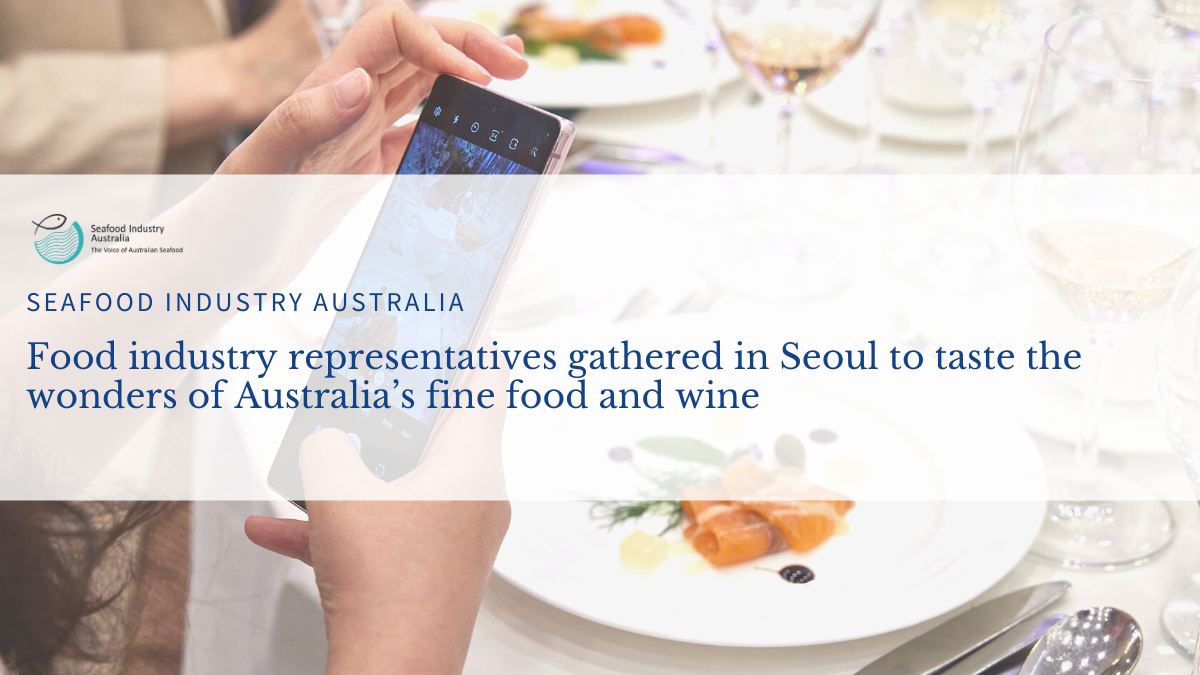
Food industry representatives gathered in Seoul to taste the wonders of Australia’s fine food and wine
Australia’s finest seafood was on the menu at a gala dinner in Seoul recently as food industry representatives gathered to taste the wonders of Australia’s fine food and wine.
More than 120 people attended the event including food importers, distributors and chefs, along with Australian industry representatives and government officials including the Australian Ambassador to South Korea, Catherine Raper.
The guests were treated to the wonders of Australia’s fresh seafood, including salmon gravlax produced with Tasmanian Atlantic Salmon, Australian lobster salad made with Western Rock Lobster, and Australian lobster gratin made with Australian butter and cream by Australian chef Lloyd Blackley, who runs a brunch restaurant in Mapo, Seoul.
The evening was a feast of Australia’s wonderous fresh produce and included Australian broccoli and cream soup, Australian tenderloin steak, Pavlova topped with Australian cream and grapes and assorted Australian cheese, all paired with some of Australia’s finest wines.
The evening included a cook-off between the two finalists of a competition held in the lead-up to the event to encourage young South Koreans to use Australian food and wine in their home cooking. The winner was Choi Sung-joo, who created Australia’s Sea and Land in One Bite: a rose salmon and beef pie with lemon cream sauce.
The runner-up was Dong Kyu Kim with his Lobster with Mornay Sauce, shrimp terrine and meat pie, braised dragon fruit and melon balls, carrot and asparagus.
Earlier in the day, delegates from the Australian Food and Wine Collaboration Group, including Seafood Industry Australia, attended an industry roundtable with Australian Embassy staff to discuss trade and market dynamics in South Korea and the opportunities available to Australian producers.
Background to the Taste the Wonders of Australia South Korea Gala Dinner, Cooking Competition and Industry Roundtable
South Korea is Australia’s fifth largest export market, after China, Japan, the US and Vietnam*, and offers huge potential for Australia’s food and wine producers, with a growing demand for fresh, safe, high-quality ingredients from among the country’s 51 million residents.
It’s the second high-potential export market targeted by the Australian Food and Wine Collaboration Group, after a highly successful market promotion in Thailand last year. Vietnam and Indonesia will follow in 2023-24.
Seafood Industry Australia has joined forces with Meat & Livestock Australia, Wine Australia, Hort Innovation and Dairy Australia in a Team Australia approach to champion the wonders of Australia’s fresh produce, and increase market access for farmers, food producers and the Australian seafood industry.
The partnership leverages the five individual organisations’ strengths, expertise and connections in engaging with overseas markets, along with support from an Agriculture Trade and Market Access Cooperation (ATMAC) grant of $500,000.
* Data reference: ABARES, March 2023: https://www.agriculture.gov.au/abares/research-topics/trade/dashboard
<ENDS>
Acknowledgements
The Australian Food and Wine Trade Collaboration was created to promote quality Australian food and beverages in key international markets. The members and funding partners are Dairy Australia, Hort Innovation, Meat & Livestock Australia, Wine Australia and Seafood Industry Australia.
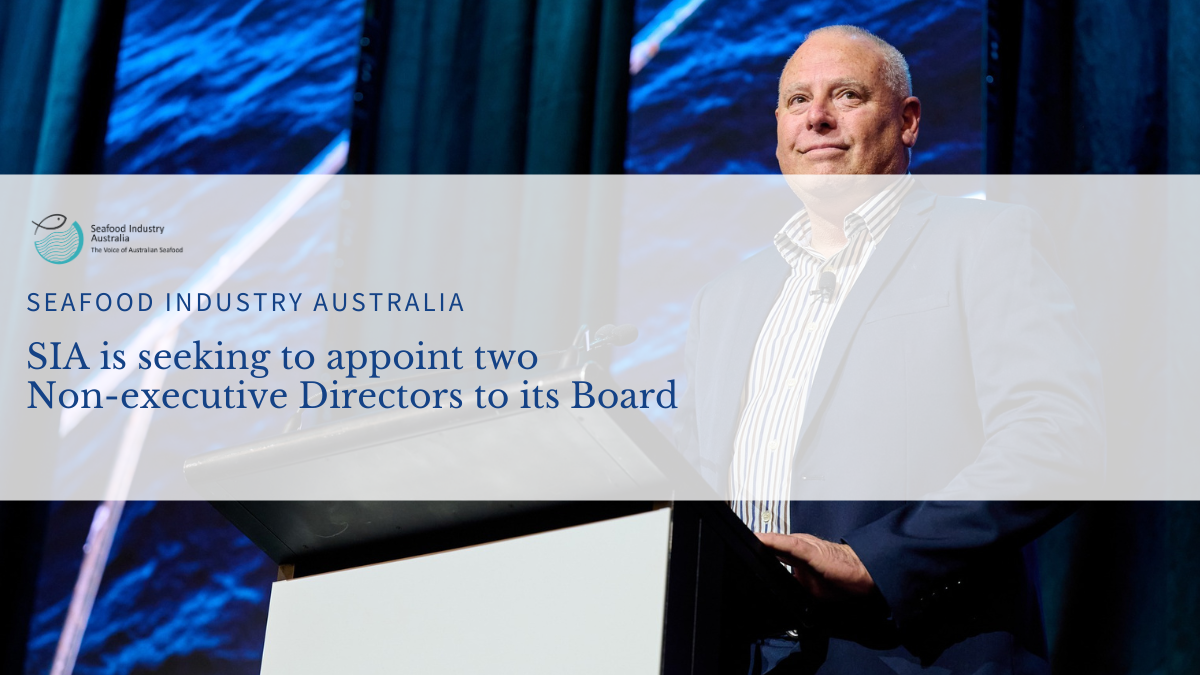
Seafood Industry Australia is seeking to appoint two Non-executive Directors to its Board
Click here to access the 2023 SIA Director Information pack.
Click here to access the 2023 SIA Director Nomination and Candidate Information Form.
About us
Seafood Industry Australia (SIA) is the national peak-body representing the whole of Australia’s seafood industry with members from the wild-caught, aquaculture and post-harvest sectors.
As the voice of Australian seafood, SIA provides consumers, Government and other stakeholders with confident and united representation. We are a member-based, not-for-profit organisation with the mission to Promote, Protect and Develop the Australian seafood industry at a national and international level.
Overview
Seafood Industry Australia is seeking to appoint two (2) non-executive directors to its Board. These positions present the unique opportunity to support the direction of the association, and the industry.
The SIA Board provides strategic guidance and effective oversight of the management and performance of the association in delivering its strategy. The Board operates under mature corporate governance and risk management frameworks to ensure the association’s efforts continue the prosperity of this important Australian industry.
About you
As a skills-based Board, candidates with experience and commercial skills in any of the following areas are encouraged to apply:
- Financial Literacy
– Experience in financial governance management, accounting and/or auditing.
– Demonstrated financial management skills and ability to interpret and interrogate financial information.
- Governance & Management
– Knowledge of the roles and responsibilities of a company director
– Significant board expertise with an ability to guide the board around governance issues and processes.
– Possess an understanding of membership-based organisations.
- Strategy & Legal Experience
– Awareness of regulatory and statutory frameworks.
– Experience in leading change and innovation in complex multi-stakeholder environment.
– Entrepreneurial mindset.
– Ability to balance competing views and set priorities.
- Industry knowledge & Experience
– Extensive industry experience, with a preference for the aquaculture in at least one role
– Well-connected and respected with a strong network of key stakeholders.
- Communication & Contribution
– Be able to effectively communicate ideas to the board.
– Contribute skills, knowledge and expertise to be an effective member of the board.
– Excellent written and verbal communication skills.
Directors must be prepared to attend and participate in various meetings, including at least 4 Board meetings per year, the Annual General Meeting (AGM) and serve on board committees. Current committees of the Board include:
- Corporate Governance Committee
- Financial Audit and Risk Management Committee
- Director Nomination Committee
Previous experience as a Board Director and/or willingness to undertake relevant professional development is desirable. GAICD or similar credentials are highly regarded.
This is a volunteer position. Reimbursement will be provided for travel, accommodation and related expenses, in line with company policy. Board appointments are 3-year terms with a maximum of 2 terms as per the Constitution.
Applications
SIA welcomes and encourages all suitably qualified candidates to apply. For further information on SIA please visit www.seafoodindustryaustralia.com.au and for an information pack outlining the application process, please click here.
To express your interest, email your application and CV to info@463.9af.myftpupload.com. Applications close by 5pm AEST Thursday, July 27, 2023.
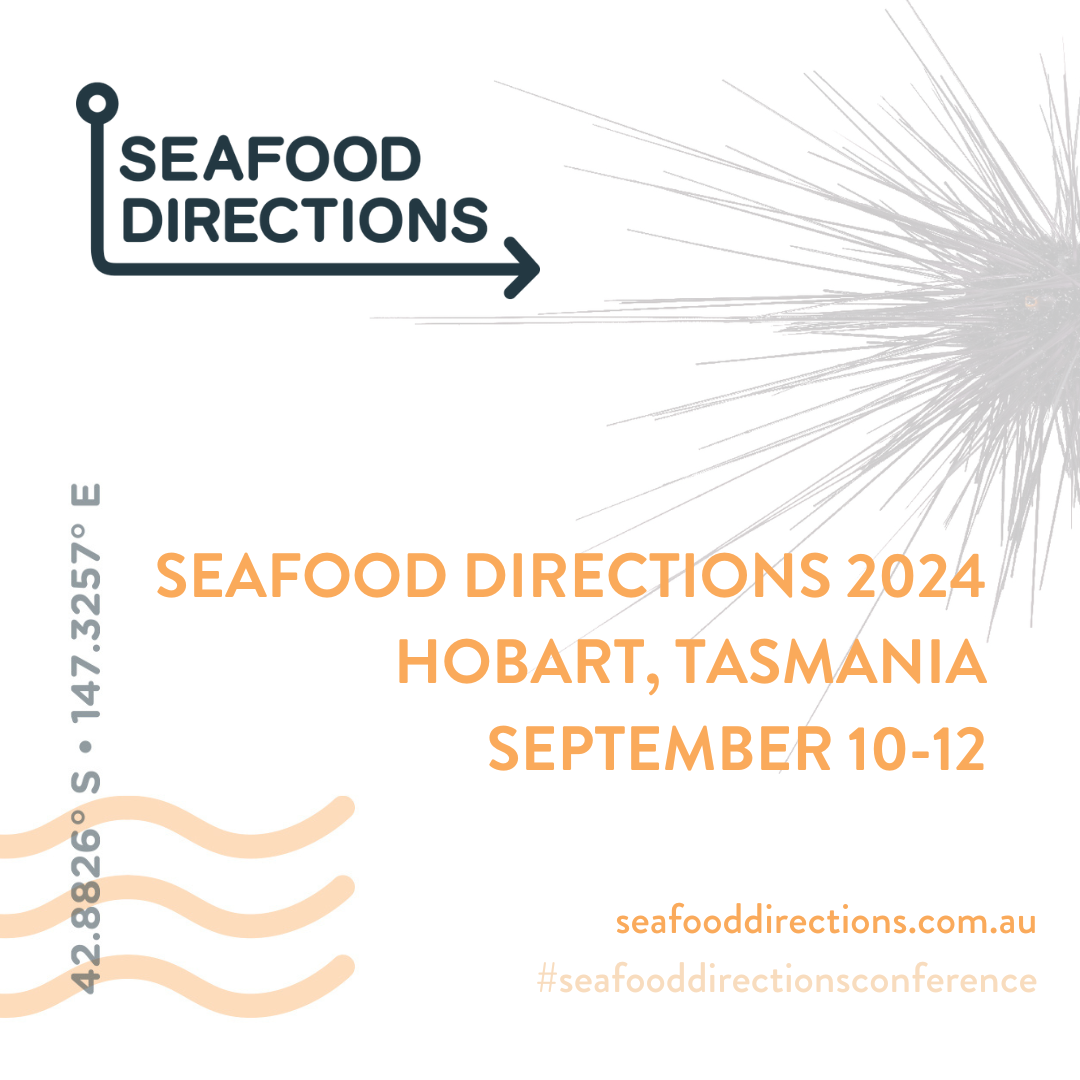
Hobart named as host city for 2024 Seafood Directions Conference
Following a sell-out event in 2022, Seafood Industry Australia (SIA), the national peak-body representing Australia’s commercial seafood industry, has announced their biennial conference, Seafood Directions, will be held in Hobart from September 10-12, 2024.
“It is with great pleasure we announce the Seafood Directions Conference 2024 will be held in Hobart at the Hotel Grand Chancellor from September 10-12,” SIA CEO Veronica Papacosta said.
“The conference is the industry’s leading forum for knowledge exchange, collaboration, and networking. As one of the most prominent gatherings of commercial seafood professionals in the Southern Hemisphere, the conference attracts attendees from fields including aquaculture, wild-capture fisheries, research institutions, government bodies, processors, suppliers, exporters, and retailers.
“We’re excited to bring the Seafood Directions Conference to Hobart. Tasmania is renowned for its thriving commercial seafood industry, innovative aquaculture facilities, leading wild-catch fisheries, world-class port-harvest ventures and progressive feed producers. Its vibrant culinary scene, rich maritime heritage, and commitment to sustainable seafood practices make it an ideal location to hold this event.
“The conference venue offers a central location amidst the hustle and bustle of a working commercial seafood harbour. The interactive three day conference program will facilitate meaningful discussions and interactions, capped off by the industry’s night-of-nights, the National Seafood Industry Awards, celebrating the contribution of individuals, businesses and organisations to the Australian seafood industry over the last two years.
“The Seafood Directions Conference 2024 aims to explore innovative strategies, emerging technologies, and sustainable practices that will shape the seafood industry’s trajectory. The program will feature keynote presentations, panel discussions, interactive workshops, and industry exhibitions, covering a broad range of topics including climate resilience, nature, collaboration, Sustainable Development and the Blue Economy.
“The conference will provide an exceptional opportunity for delegates to gain insights from renowned experts, engage in thought-provoking discussions, and forge valuable connections with industry peers. Attendees will have ample opportunities to explore Hobart’s natural beauty, enjoy its renowned seafood delicacies, and immerse themselves in the local culture.
“This conference will foster collaboration, inspire innovation, and empower participants to address the critical challenges and opportunities facing the seafood sector today. We look forward to welcoming delegates from around the globe to experience the warmth and hospitality of Hobart.”
Stay up to date with the Seafood Directions Conference at www.seafooddirections.com.au. Early-bird ticket sales for the 2024 event will open in January 2024.
<ENDS>
ABOUT SEAFOOD DIRECTIONS
The Seafood Directions was established in 1999 as a Fisheries Research and Development Corporation (FRDC) initiative to provide an industry forum for the exchange of ideas. FRDC remains a key funding partner and support agency for Seafood Directions 2022, 2024 and 2026 which will be hosted by Seafood Industry Australia.
The Seafood Directions Conference is a premier international event that brings together professionals, researchers, and stakeholders from the seafood industry to discuss key issues, share knowledge, and explore opportunities for growth and sustainability. With a focus on innovation, responsible practices, and industry collaboration, the conference plays a pivotal role in shaping the future of the global seafood sector.
SEAFOOD DIRECTIONS SPONSORS AND EXHIBITORS
Sponsorship opportunities for the Seafood Directions Conference 2024 will be opening soon. For information on conference sponsorship please contact the Seafood Industry Australia team:
CEO, Veronica Papacosta
m: 0409 220 7884
e: ceo@463.9af.myftpupload.com
Stakeholder Manager, Jasmin Kelly
m: 0411 430 838
e: jasmin@463.9af.myftpupload.com
SEAFOOD DIRECTIONS 2022 FAST FACTS
- Held at the Sofitel, Brisbane Central
- 500 delegates, from four countries
- 106 speakers, 40 sessions, three days
- 97% of delegates plan to attend Seafood Directions 2024
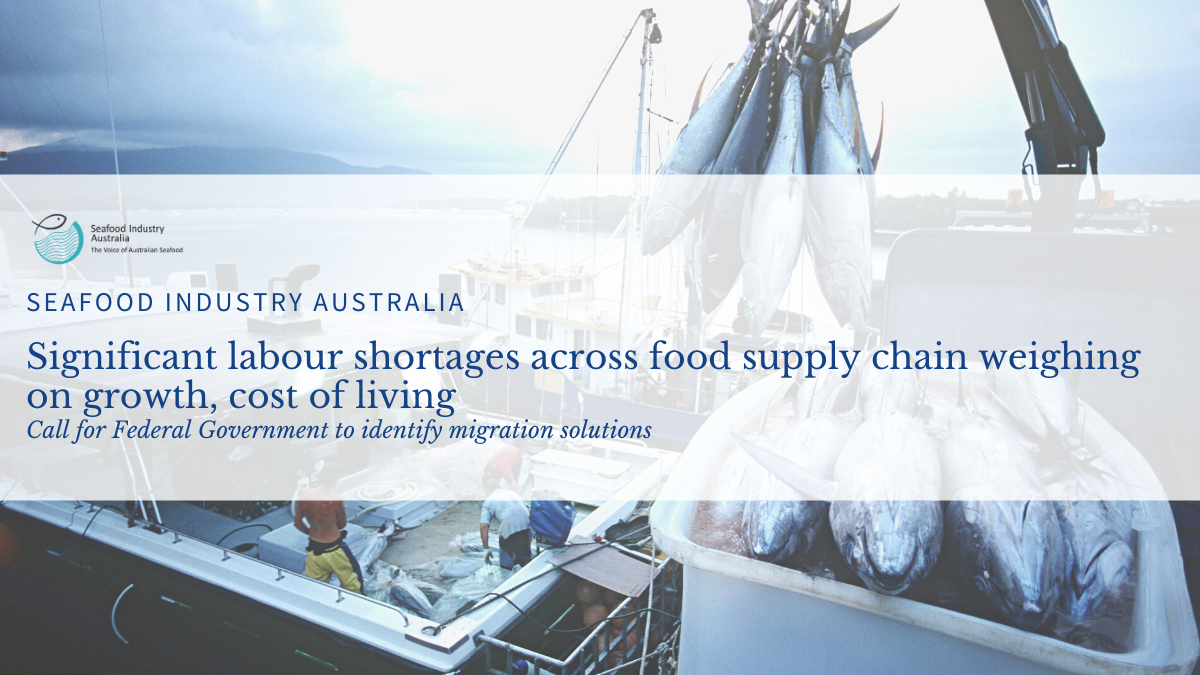
Significant labour shortages across food supply chain weighing on growth, cost of living
Call for Federal Government to identify migration solutions
Australia’s top peak food industry bodies, which calculated the food supply chain was short at least 172,000 workers, from paddock to plate, before the Jobs & Skills Summit last September say limited progress is now weighing on both GDP growth, and the cost of household’s weekly shop.
Figures released yesterday confirm Australia’s GDP growth has slowed to a crawl. Meanwhile the food supply chain which represents more than 10% of GDP is operating at reduced capacity due to workforce constraints.
Farmers, food suppliers, distributors, independent supermarkets, grocers, butchers, food processors and hospitality are all sending a united message: if you want a stronger economy, just add workers.
With almost 80% of Australians concerned about the price of food, labour shortages are, from a ‘cost of business’ perspective, one of the contributing factors to food price increases to the consumer as well as the ability to process and move food along the supply chain.
The ‘National Food Supply Chain Alliance’ represents over 160,000 businesses with a revenue of over $200 billion. It includes the National Farmers Federation, the Australian Meat Industry Council, Seafood Industry Australia, Independent Food Distributors Australia, AUSVEG, Master Grocers Australia, Restaurant and Catering Industry Association and the Australian Association of Convenience Stores and the Refrigerated Transport and Warehouse Association.
According to the peak bodies, the food supply chain urgently requires a suite of solutions, including reducing barriers to work and providing suitable visa pathways to welcome overseas workers. This should include a greater focus on ASEAN countries for schemes which service the sector.
The Alliance believes that food price inflation – which is as high as 15% in some categories in the most recent data – is one of the few ‘cost of living’ pressures the Government can influence. This can be done by working constructively with industry to stabilise the myriad of ever- increasing input costs. Labour shortages, energy prices, increasing wages, fuel and supply chain disruptions are all issues negatively impacting the supply chain. This impacts business and ultimately, the prices paid at the checkout.
The Alliance believes the Government must, as a matter of urgency, develop a National Food Supply Chain Resilience Strategy to reduce the impact of the multiple long-term disruptors from natural disasters to future global challenges.
Contact: Richard Forbes, CEO Independent Food Distributors Australia – 0427 270 687
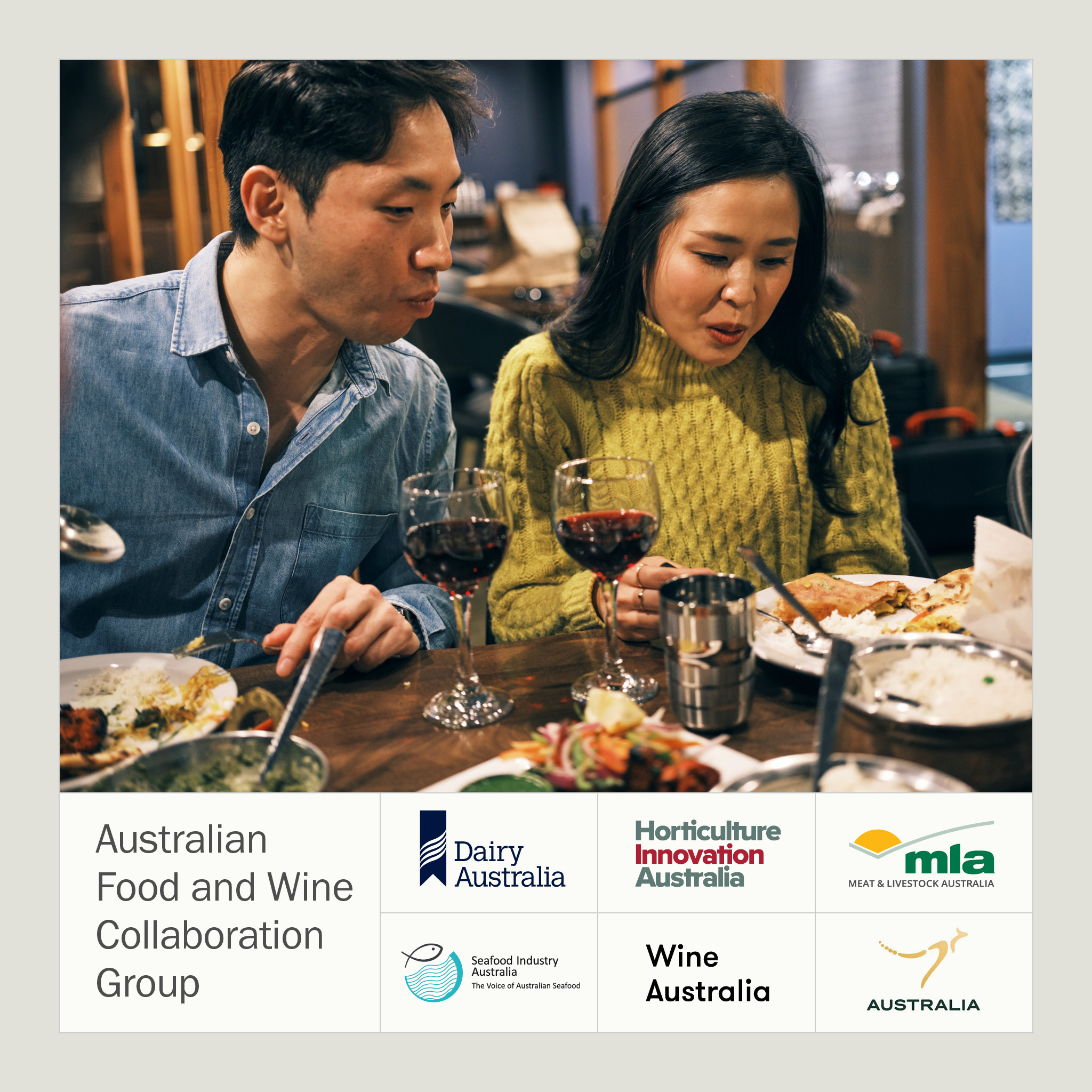
South Koreans taste the wonders of Australia
South Koreans are being encouraged to bring the fresh flavours of Australia’s finest food and wine into their homes, thanks to the latest export market drive by the Australian Food and Wine Collaboration Group.
South Korea is Australia’s fifth largest export market, after China, Japan, the US and Vietnam*, and offers huge potential for Australia’s food and wine producers, with a growing demand for fresh, safe, high-quality ingredients from among the country’s 51 million residents.
Seafood Industry Australia has joined forces with Meat & Livestock Australia, Wine Australia, Hort Innovation and Dairy Australia in a Team Australia approach to champion the wonders of Australia’s fresh produce, and increase market access for farmers, food producers and the Australian seafood industry.
The partnership leverages the five individual organisations’ strengths, expertise and connections in engaging with overseas markets, along with support from an Agriculture Trade and Market Access Cooperation (ATMAC) grant of $500,000.
Highlights of the South Korea campaign include an online cooking competition targeting 20-30-year-olds, to show the many ways in which quality Australian produce can enhance homecooked meals.
The competition winners will be announced in a gala dinner in June in Seoul, where the best of Australian wine and fresh produce will be served up to some of South Korea’s most influential foodies, industry representatives, importers and distributors.
It’s the second high-potential export market targeted by the Australian Food and Wine Collaboration Group, after a highly successful market promotion in Thailand last year. Vietnam and Indonesia will follow in 2023-24.
* Data reference: ABARES, March 2023.
<ENDS>
Acknowledgements
The Australian Food and Wine Trade Collaboration was created to promote quality Australian food and beverages in key international markets. The members and funding partners are Dairy Australia, Hort Innovation, Meat & Livestock Australia, Wine Australia and Seafood Industry Australia.
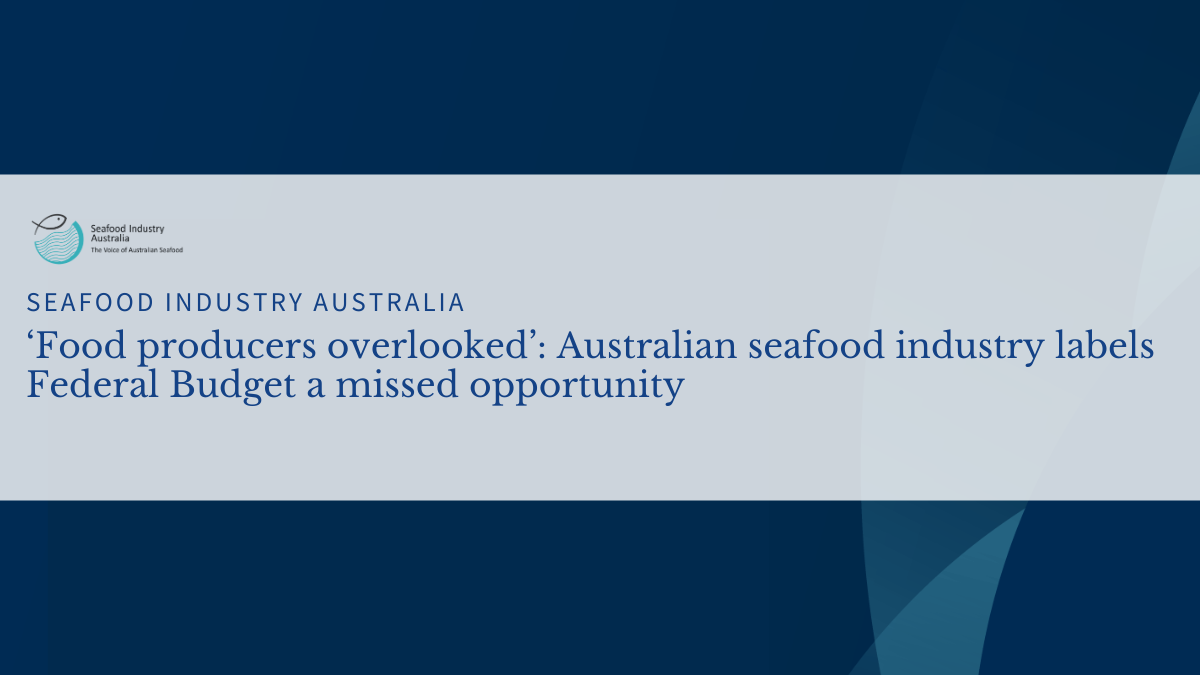
‘Food producers overlooked’: Australian seafood industry labels Federal Budget a missed opportunity
Seafood Industry Australia (SIA), the national peak-body representing Australia’s commercial seafood industry, has called the 2023-24 Federal Budget “a missed opportunity for Regional and Rural Australia” that places further pressure on Australian food producers.
“We believe the Government has missed an opportunity to support our seafood producers, businesses and the broader agricultural sector, who play a vital role in the Australian economy and support the livelihoods of thousands of Australians in Regional and Rural Australia,” SIA CEO Veronica Papacosta said.
“The budget has not addressed the challenges being faced by the seafood industry, including increased production costs and labour shortages. The increase in the heavy vehicle road user charge, raising the Temporary Skilled Migration Income Threshold (TSMIT), and the biosecurity protection levy to be placed on our producers are going to make it harder for our producers to operate, in an already challenging environment.
“The Government has missed an opportunity to promote growth and development in Australian agriculture by capping asset write-offs, and lacks a focus on domestic manufacturing initiatives.
“We acknowledge and thank the Minister for Agriculture, Fisheries and Forestry Senator Murray Watt for reaffirming the government’s committed to continuing the rollout of country of origin seafood labelling sold in foodservice over the next 12 months.
“Australia’s food supply-chain has faced well documented worker shortages since COVID, and the increase to the TSMIT is going to make it harder and more costly for Australian businesses to attract and retain the workers we need.
“We are an industry reliant on foreign labour. We simply cannot find Australians willing to fill our vacant roles. What the TSMIT increase fails to take into account are the standing costs associated with the use of foreign labour including visas, insurance and travel. Importantly, this is not unique to the seafood sector. This decision will increase hardship to businesses already under strain right across the supply-chain.
“The heavy vehicle road user charge is being raised by 6 per cent a year for the next three years. This means the cost for transporting food and fibre around the country will increase. Coupled with workforce issues in the supply chain, further exacerbated by this budget, there will continue to be upward pressure placed on food prices for Australians, and further exacerbate cost of living pressures. This is something we never want to see.
“We acknowledge and appreciate the Government’s recognition of the importance of biosecurity to the industry and the wider Australian community. We welcome the commitment to increased biosecurity funding, however we would have hoped the risk-creators would have had a higher focus.
“While the cost being placed on those who benefit from a strong biosecurity system may seem low on face value, they, coupled with increases to the TSMIT and road use, add up.
“What might look good on paper has very real implications on the Australians working hard to put food on tables right around the country.”
<ENDS>
For more information or to organise an interview with SIA CEO Veronica Papacosta
please contact SIA communications and public affairs manager Jessica McInerney
E: jessica@463.9af.myftpupload.com M: 0420 695 431
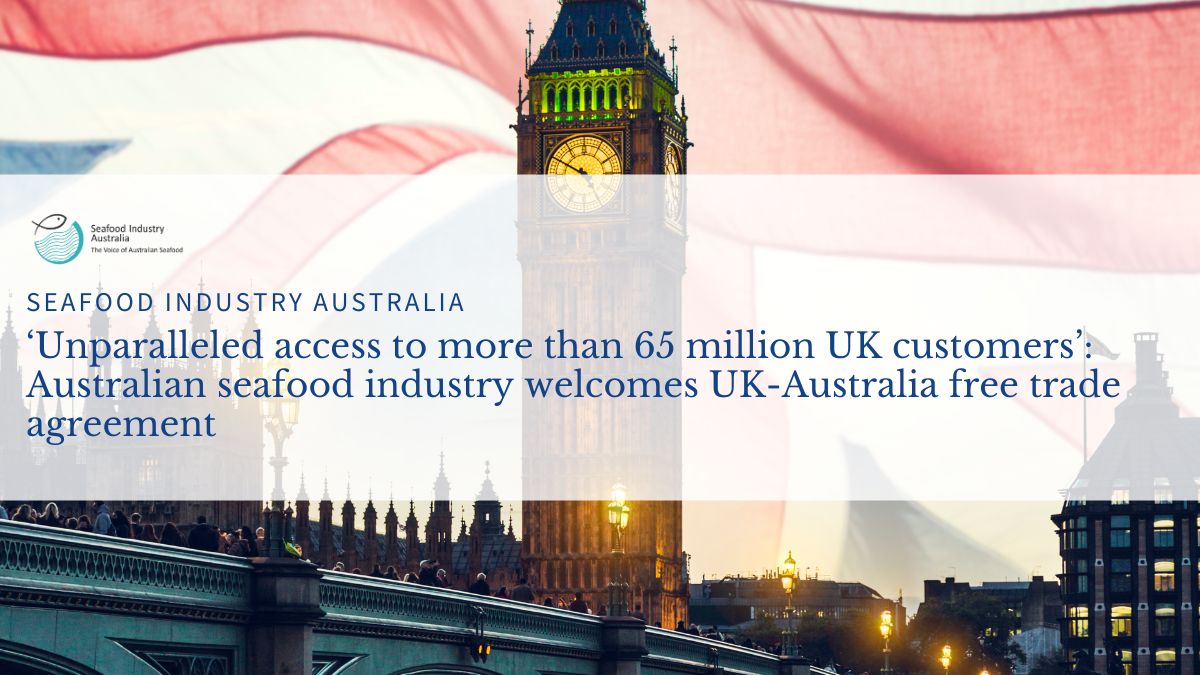
‘Unparalleled access to more than 65 million UK customers’: Australian seafood industry welcomes UK-Australia free trade agreement
Seafood Industry Australia (SIA), the national peak-body representing Australia’s commercial seafood industry, has welcomed the recent signing of the free trade agreement between Australia and the United Kingdom.
“The agreement is expected to create a wealth of new opportunities for the Australian seafood industry and strengthen trade ties between our two nations,” SIA CEO Veronica Papacosta said.
“The agreement will eliminate tariffs on Australian seafood exports to the UK, including lobsters and fin-fish on entry into force, and the remaining tariffs will be eliminated over a three year period. Our Great Australian Seafood producers now have access to more than 65 million UK consumers who value our safe, healthy, and sustainably produced great Australian seafood. While UK consumers will have access to the greatest seafood in the world, tariff-free.
“This move will help to increase the competitiveness of Australian seafood in the UK market and will provide new opportunities for Australian seafood companies to expand their international operations and diversify markets.
“Australian seafood exports to the UK were worth $720,000AUD in the 2020‑21 period. The new agreement is expected to significantly boost this figure in the coming years and help to drive growth and diversity within the Australian seafood industry.
“Australian seafood is well regarded in the UK. Our fisheries are some of the most highly regulated and well managed in the world. Our sustainability credentials are very compelling, which for UK customers is a major competitive advantage. Our customers know they are getting high-quality products from sustainably managed fisheries. While our Australian exporters are known for their reliability and professional service.
“This agreement will provide a much-needed boost to the Australian seafood industry, and we are confident it will help to support the growth and success of our industry for many years to come.
“The Australian seafood industry is committed to working closely with the Australian and UK governments to ensure that the new agreement is implemented smoothly and effectively. With its world-class seafood products and our commitment to sustainability, the Australian seafood industry is well-positioned to take advantage of the opportunities provided by this new agreement and to continue to grow and thrive in the years ahead.
“We applaud Prime Minister Anthony Albanese, Trade Minister Don Farrell and our negotiation team for their hard work.”
<ENDS>
For more information or to organise an interview with SIA CEO Veronica Papacosta
please contact SIA communications and public affairs manager Jessica McInerney
E: jessica@463.9af.myftpupload.com M: 0420 695 431
